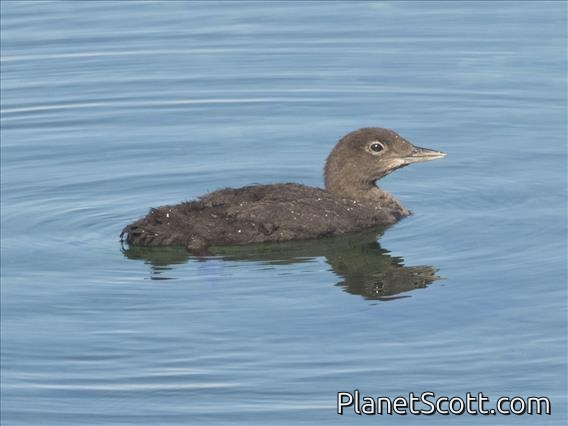Common Loon (Gavia immer)






About Common Loon (Gavia immer)
- Kingdom: Animals
- Phylum: Chordates
- Class: Birds
- Order: Pelicans
- Family: Loons
The common loon or great northern diver is a large member of the loon, or diver, family of birds. Breeding adults have a plumage that includes a broad black head and neck with a greenish, purplish, or bluish sheen, blackish or blackish-grey upperparts, and pure white underparts except some black on the undertail coverts and vent. Non-breeding adults are brownish with a dark neck and head marked with dark grey-brown. Their upperparts are dark brownish-grey with an unclear pattern of squares on the shoulders, and the underparts, lower face, chin, and throat are whitish. The sexes look alike, though males are significantly heavier than females. During the breeding season, loons live on lakes and other waterways in Canada, the northern United States, and southern parts of Greenland and Iceland. Small numbers breed on Svalbard and sporadically elsewhere in Arctic Eurasia. Common loons winter on both coasts of the US as far south as Mexico, and on the Atlantic coast of Europe.
Source: Wikipedia
Trips
Visits
-
1978-07-04
Sand Lake, United States of America -
2004-06-20
Gwaai Haanas National Park, Canada -
2006-05-25
Heron's Head Park, United States of America -
2007-02-05
Candlestick Park, United States of AmericaCandlestick is usually a reliable spot for Common Loons in winter and spring -
2007-05-21
Candlestick Park, United States of America -
2008-03-04
Walker Lake, United States of America -
2009-04-17
San Francisco - Pier 39, United States of America -
-
2010-05-27
Kenai Peninsula, United States of America -
2010-06-08
Denali State Park, United States of America -
-
2013-03-23
Coyote Point County Park--harbor and marsh, United States of America -
2013-04-16
Aransas NWR (CTC 037) (Aransas Co.), United States of America -
2013-04-18
Galveston Island, United States of America -
2014-03-11
Elkhorn Slough, United States of America -
2014-07-12
Ano Nuevo State Park, United States of America -
2014-11-18
Fort Funston, United States of America -
2014-12-21
Arrowhead Marsh, United States of America -
2014-12-26
Sutro Heights--Baths / Land's End, United States of America -
2015-01-10
Half Moon Bay - Pillar Point, United States of America -
-
-
-
-
-
-
-
-
-
-
-
-
-
-
-
-
2023-10-21
Farallones Marine Sanctuary, United States of America -
-
2024-05-25
Keuka Lake, United States of America -
-
-





